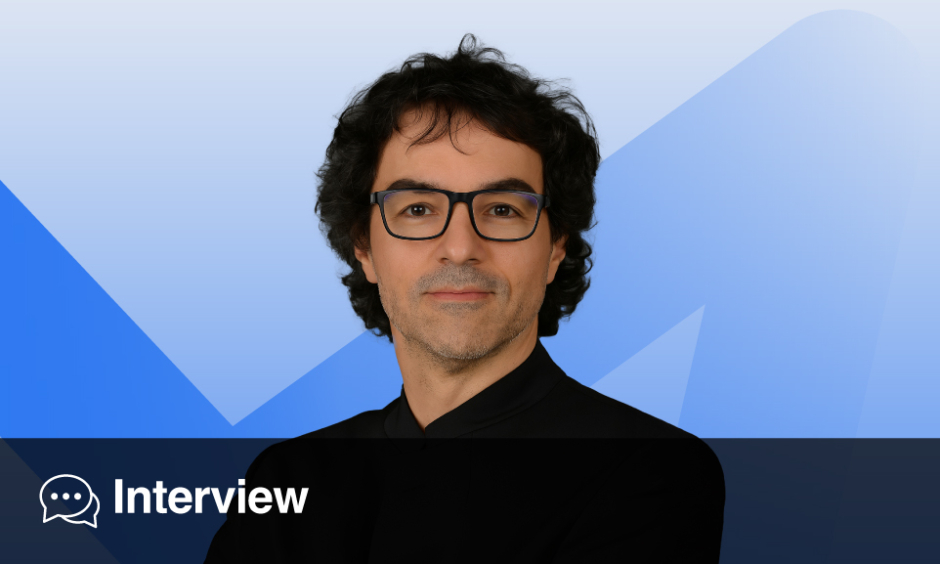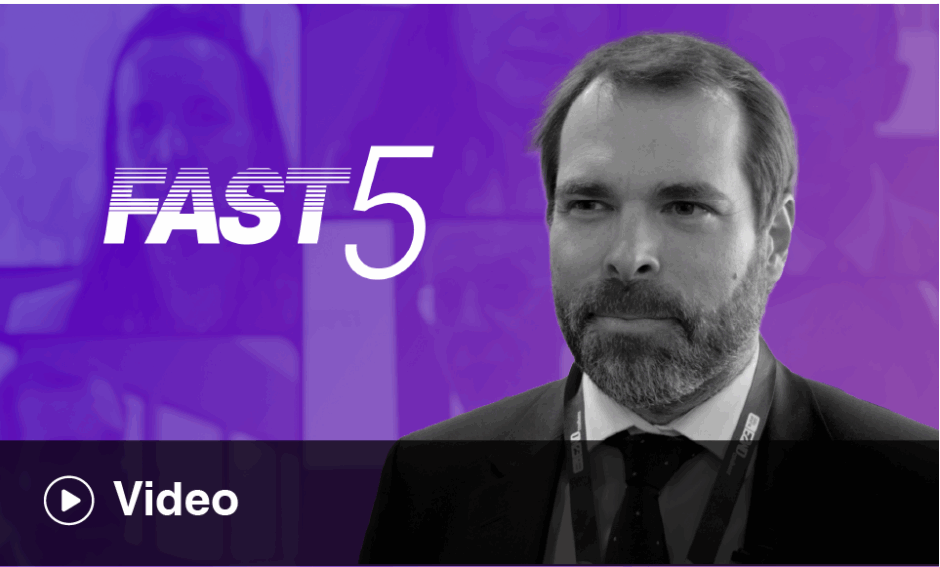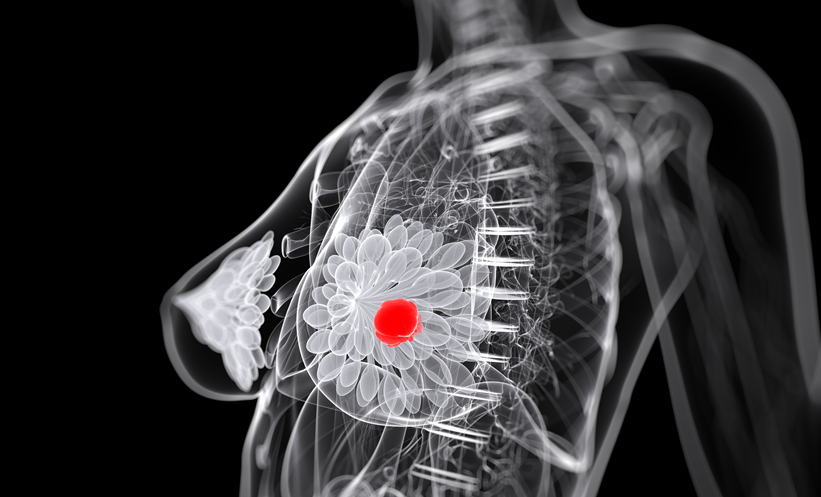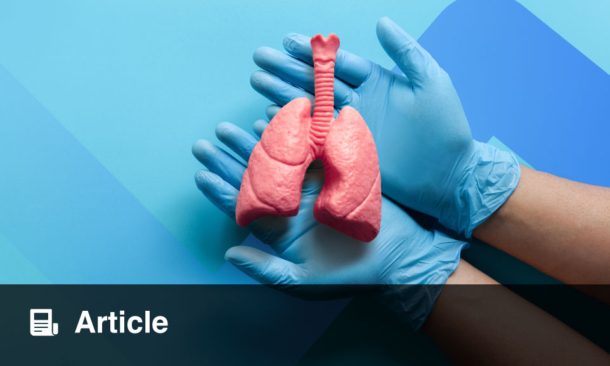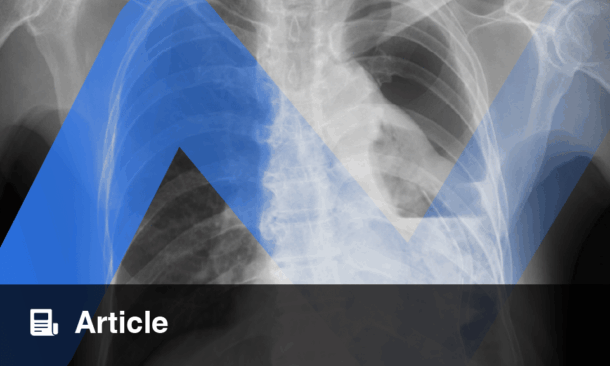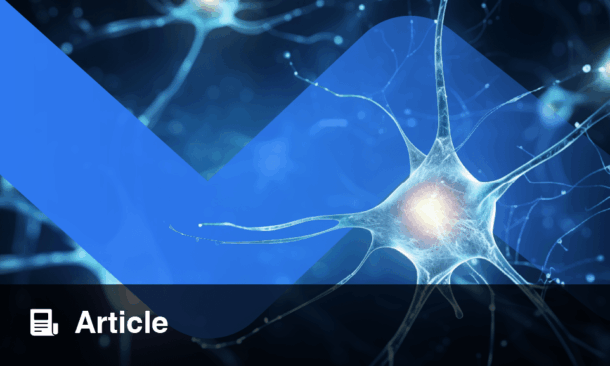Fabrice André | Director of Research and Professor, Department of Medical Oncology, Institut Gustave Roussy, Villejuif, France; President, European Society for Medical Oncology (ESMO)
Citation: EMJ Oncol. 2025;13[1]:89-94. https://doi.org/10.33590/emjoncol/COAN3250
![]()
Could you begin by sharing some insights into your professional journey and what led to your current role as Director of Research at Gustave Roussy, Villejuif, France?
I went into cancer care and cancer research because, when I was a fellow, it was the medical specialty with the largest number of challenges; survival was very poor. At that time, it was also the beginning of molecular oncology, meaning that people had identified the first oncogene. It was the beginning of the work in immunology. There was this conjunction where a lot of patients were dying, but we could see the first signal that something was going to happen. Because of this, I went into oncology. Then, I had the opportunity to get a permanent position at Gustave Roussy and work on breast cancer.
I sub-specialised and worked on gaining a deeper understanding of breast cancer and developing new therapies for patients. After I came back from a stay at the MD Anderson Cancer Center, Houston, Texas, USA, I had the opportunity to start my own research team focused on how to predict treatment efficacy thanks to biomarkers. Then, because Gustave Roussy began developing a lot of translational research, they needed someone involved in this type of research to lead the research division.
That’s the journey, starting from challenges and identifying opportunities, and then step by step, growing the field of translational research.
As the director of UMR 981, could you share some of the most exciting molecular predictors and new targets your team is currently investigating, particularly in relation to breast cancer?
My team performs molecular analysis at a large scale in situations that have not been well investigated, and where there are some important challenges. For example, we could report the first genomic landscape of metastatic breast cancer using whole exome sequencing, and identify some new genomic alteration that could be involved in resistance. That was an important report. We could identify, subsequently, that some molecular activation, like programmed death-ligand 1 (PD-L1) amplification, could predict sensitivity to immunotherapeutics. We could describe how antibody-drug conjugates, for example, work, and identify the protein that could be involved in resistance (SLS4). This is what has been done in the last few years: describing the molecular landscape of a very specific situation, like metastatic breast cancer, and from this, focusing on a few biomarkers. What we are doing more often now is investigating the mechanism of action of new complex anti-cancer therapies.
How would you describe the current genomic landscape of metastatic breast cancer, and what emerging developments or advancements are on the horizon for its treatment and understanding?
So, when you analyse the genomic landscape of metasticmetastatic breast cancer, and I will be focusing more precisely on hormone receptor positive breast cancer, there are several key findings: firstly, most of the molecular alterations that are enriched in metastatic breast cancer are connected to therapy resistance. For example, ESA1, AKT1, ERBB2, KMT2C, and RB1 mutations. This is a very important point, and the general concept of this has also been found by other teams. What it tells us is that there are not many genomic alterations, in terms of mutation, that could explain the metastatic process. The molecular clues of the metastatic process could probably fall more on the side of epigenetics, for example.
Secondly, there is an evolution of the genome. It seems that, when we look at the mutational signature acquired during the evolution of the resistance and metastatic process, it could be in relation to (apolipoprotein B mRNA editing enzyme catalytic polypeptide) APOBEC. So, is it APOBEC that mediates this evolution, or is it something else to do with the APOBEC signature? We don’t know, but it’s a mutational scar and signature that we can see.
Something else that I think is important is that the more these mutational signatures are active, the worse the outcome is. When there is an activation of the mutational process, and we can see it in the cancer, then suddenly the outcome of the patient becomes very poor. This is also something used to identify the patients who have a high risk of death very quickly.
As a key contributor to the SAFIR02-BREAST IMMUNO trial exploring durvalumab in triple-negative breast cancer (TNBC), could you share the key findings, particularly regarding the correlation between CD274 gene amplification and increased PD-L1 expression in TNBC?
The aim was really to identify which subtype of breast cancer could be more sensitive to maintenance therapy with an anti-PD-L1 antibody. The trial tested durvalumab compared to maintenance chemotherapy in patients with metastatic breast cancer without genomic alteration identified. A key finding is that durvalumab improved outcomes in patients with TNBC, but not in the other group of patients. Interestingly, we could find copy number alterations because the patients were pre-screened and all received genomic testing. Because we had the data on copy number alteration at a large scale, we could observe in an exploratory retrospective analysis that the amplification of CD274 was associated with higher sensitivity to anti-PD-L1 antibody. CD274 is the gene that encodes for PD-L1, so it is an interesting finding; we can see that the more the gene copies code for PD-L1, the more sensitivity there is to anti-PD-L1 antibodies (in breast cancer specifically). Interestingly, some other colleagues have reported similar analyses. There is one paper on lung cancer, for example, with the same findings.
Your research on using bioinformatics and AI to predict relapse in patients with breast cancer is fascinating. How close are we to developing a clinical tool that can reliably identify patients at risk of recurrence based on these advanced techniques?
One major step regarding patients with early-stage breast cancer is identifying which patients present a high risk of relapse as soon as possible. Why? Because then the patients with a very low risk of relapse can be treated locally with potential de-escalation. Meanwhile, for patients at a high risk of relapsing, we must develop new drugs. From this need and this gap, we developed a project, supported by the French government, to re-identify patients with a very high risk of relapse as soon as possible. The strategy was to use AI-assisted pathology. We tested 1,400 patients and trained the AI, and interestingly, the AI came with a model that could identify a group of patients with high risk of relapse. When we looked at the features that were identified, we could see that the AI identified some features that are already known to be associated with a poor outcome. This means that the AI, without prior knowledge, could identify the features that we already know but that took us several decades to discover. This shows us that AI can rediscover things that are relevant for the patient.
The other part of this very large programme is about the genomic side of the disease and identifying which genomic alterations predict outcomes at the DNA and RNA level. Though it has not yet been reported, we could indeed identify that some DNA mutations or gene amplification could predict the outcome. What I want to highlight is the need to do this, because otherwise we are going to develop new drugs that are very expensive and cause some toxicity in a population that does not need new drugs and will, in fact, never relapse.
With the European Society for Medical Oncology (ESMO) Congress 2025 set in Berlin, Germany, are there any sessions or speakers you’re especially excited about, and why?
The ESMO Congress is a big event. There are around 35,000 participants; most attend physically, but some attend virtually as well. The Congress is organised in two different parts. We have some sessions that are mostly for educational purposes. For these, the programme is available. We also have a large part of the Congress dedicated to new data. This is based on abstract submission, and we usually have very interesting presidential sessions about practice-changing trials in cancer care.
In terms of the educational part, the aim is really to train all the oncologists on innovation and equip them with knowledge. A lot of innovations are on the way, and it’s our job as a scientific society to train doctors to be able to understand these innovations and use them in an optimal way for the patient. For example, we have a new track on AI, which is becoming very important in cancer care. Interestingly, we also developed a new track on molecular oncology, which means that we are going to classify metastatic cancer based on biology rather than the organ of the (primary) tumour. This really is a new way of classifying cancer and practising oncology based on molecular alteration. Digital oncology is becoming more and more prevalent, and we need to implement and use it in an optimal way.
We also have a track dedicated to prevention. Oncologists are becoming more and more involved in prevention, so it’s important for them to learn more about it, such as how to prevent secondary cancer.
Then we have the usual tracks. I will call them the historical tracks: breast cancer, gastrointestinal cancer, lung cancer, etc. Inside these tracks, what we are really trying to do is once again provide oncologists with training on the latest advances. So, most of the sessions are focused on new drugs, and what the optimal use of these new drugs looks like in terms of target populations, but also in terms of safety and toxicity management.
As the ESMO President, what are the main goals and areas of focus for this year’s Congress, and how do you plan to address the current challenges in oncology research and patient care?
ESMO is a scientific society with 45,000 members globally, so which challenges are we facing now in the field of oncology, and how can ESMO address them? Firstly (not necessarily by order of priority), it’s training doctors on innovation. For this, we are developing new conferences and new journals on AI and digital oncology, but also prevention and all these emerging elements that have never been on oncologists’ radars before.
Secondly, it’s moving forward to develop new cancer classifications based on molecular analysis. This is a new vision for oncology, especially in the metastatic setting. We want oncologists to understand the disease in order to better treat the patient. Our vision is for the way that we practise oncology in the future to be based on an understanding of the disease, in addition to the current evidence. This is the major plan for oncology.
Besides the educational and scientific dissemination, we want ESMO to become an organisation that develops tools that will shape oncology. My first example of this is that ESMO developed the Magnitude of Clinical Benefit Scale (MCBS), which allows oncologists to rank the efficacy and utility of drugs. It’s a tool that we can use as oncologists to shape our practice. My second example is the ESMO Scale for Clinical Actionability of molecular Targets (ESCAT). It’s used to classify genomic activation. It’s a framework that is going to shape and optimise the way we do oncology. We want ESMO to not only be an educational platform or a platform for scientific dissemination, but also an organisation that develops new tools and frameworks that will change the way we practice oncology and make it more optimal. We want to reach out and help more members globally. We want to be sure that any member, wherever he or she is located, can access our services, and that our services are aligned with local needs.
We want to develop solutions for areas of the world that do not have access to the same innovations that we do. This is a big problem, and it’s an ethical issue. Collectively, ESMO and others need to find concrete solutions instead of just having discussions. In order to address this, ESMO has developed the International Cancer Foundation (ICF) where we aim to help colleagues working in areas where there is a lack of access to innovation.
We also have a very good working group on AI and how to integrate the use of generative AI in educational activities, as well as in the decision-making process in the field of oncology. Again, this is going to be an important topic.
To summarise: we are 1) developing activities to train oncologists about innovation, 2) developing a new vision around molecular oncology and new classifications, 3) trying to reach members globally and provide solutions for access to innovation, and 4) trying to integrate AI and the way we make decisions.
Given your extensive experience in precision medicine, how do you envision the integration of genomics, biomarkers, and targeted therapies evolving in oncology over the next decade?
What are the challenges in the field of precision oncology that we have to overcome in order to deliver the right treatment? The first is how to move beyond genomics. Most of the drugs that are being developed now are complex therapies. A lot of them are coming from the biotechnology sector. More and more, we need to integrate a new dimension of biology with biomarkers, meaning we need to integrate protein profiling, assessment of the tissue microenvironment, and spatial assessment. This means that we are moving towards a situation where we will have multiple dimensions of the biology that we can use to predict drug efficacy. This is one part of the vision. The second part is how to make the first generation of testing available everywhere, and for these, there are two solutions.
The first solution is developing tools based on the pathology, assisted by AI, to screen at a very large scale and identify patients with a high likelihood of presenting a gene alteration. The aim here is very simple: can we, based on very cheap, simple technology, and assisted by AI, identify groups of patients on a large scale that we will then test with genomics or more complex technology?
The other way to increase the number of patients who receive genomic testing is to move to circulating tumour DNA (ctDNA), because when you use ctDNA, there is no need to perform a biopsy, which saves money (the patient doesn’t stay at the hospital and there’s no need for complex infrastructure). Therefore, the use of ctDNA is likely going to increase the number of patients who get access to a test. This is very important.
Lastly, we have the development of new drugs. It is about understanding the mechanism of action of new drugs in patients in order to derive new biomarkers. In the past, we used to derive biomarkers based on what was happening in pre-clinical studies or what we thought was the mechanism of action. Now, there are more efforts worldwide focused on performing all treatment biopsies to re-understand how these complex drugs are working, and this will facilitate the development of biomarkers.
What advice would you give to young researchers aspiring to specialise in oncology?
I would really invite my young colleagues to join this community of doctors working on cancer care. Why? First, because we are facing a major challenge. It’s always very important to start your professional life with a challenge, because during several decades of effort, you will see a lot of these challenges being solved, which is very rewarding. It’s a very important consideration when you start your career: where is the field going to be in the next 3 or 4 decades? Clearly oncology is going to grow. We will have new drugs and new solutions for patient. It’s a field with optimism.
The second reason why younger colleagues should become cancer care doctors is because the relationship with the patients is very special. Cancer is a very aggressive disease. Through our connection with the patient, we really get to the core of what humanity is. When you begin this relation, helping the patient is very important, but you also learn a lot about yourself, and you become another person. I’m sure that with the development of AI and new technologies, the most important people in the future will be the ones who have more humanity. I think humanity is going to come back because of these technologies. This part of the relation between patients and doctors is at the core of the practice of oncology; it gives us a lot of humanity and humility as well.
My last point is that, because this is a medical field where you can rediscover things and the challenges are so big, you can really, as a doctor, make new observations, undertake research, and contribute to transforming the field and making a difference.

